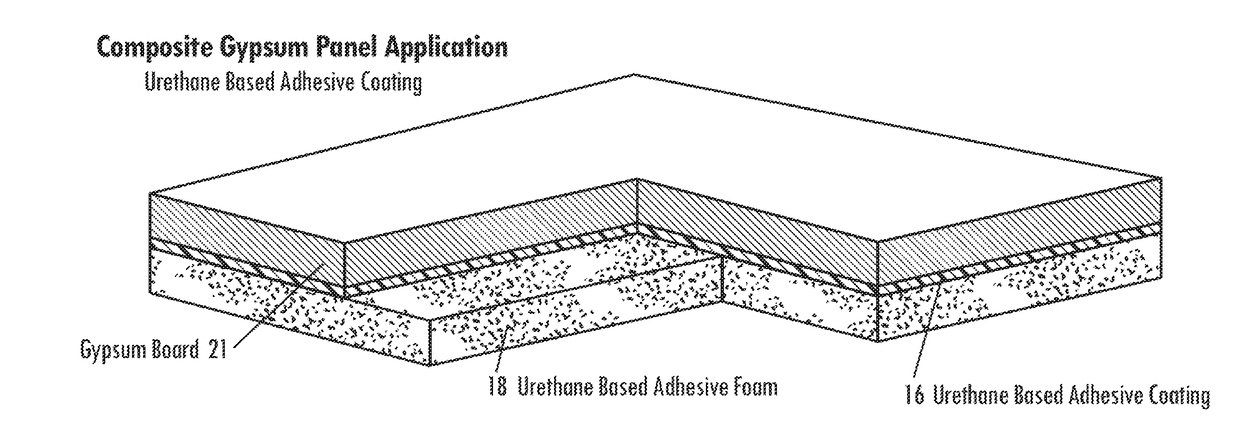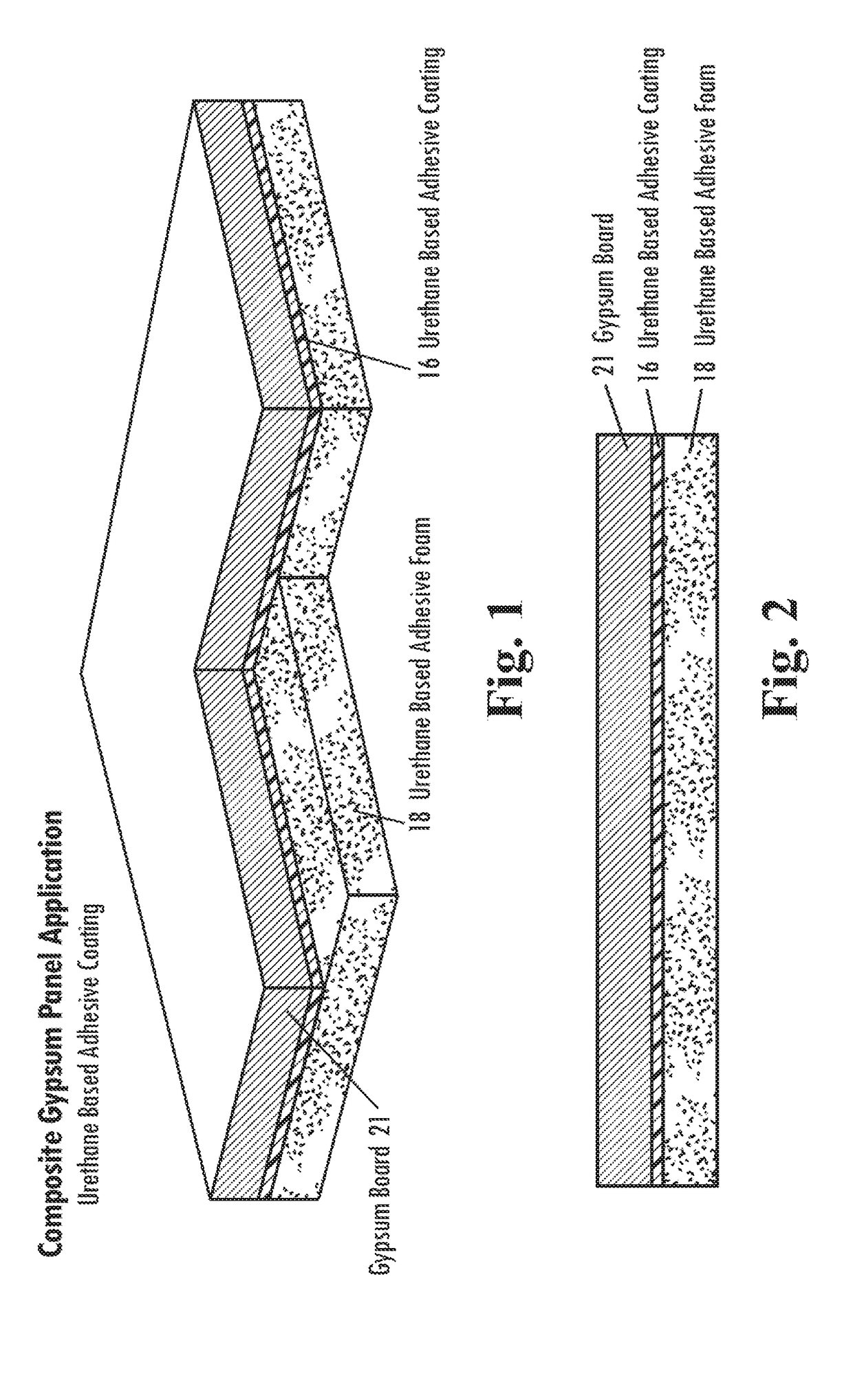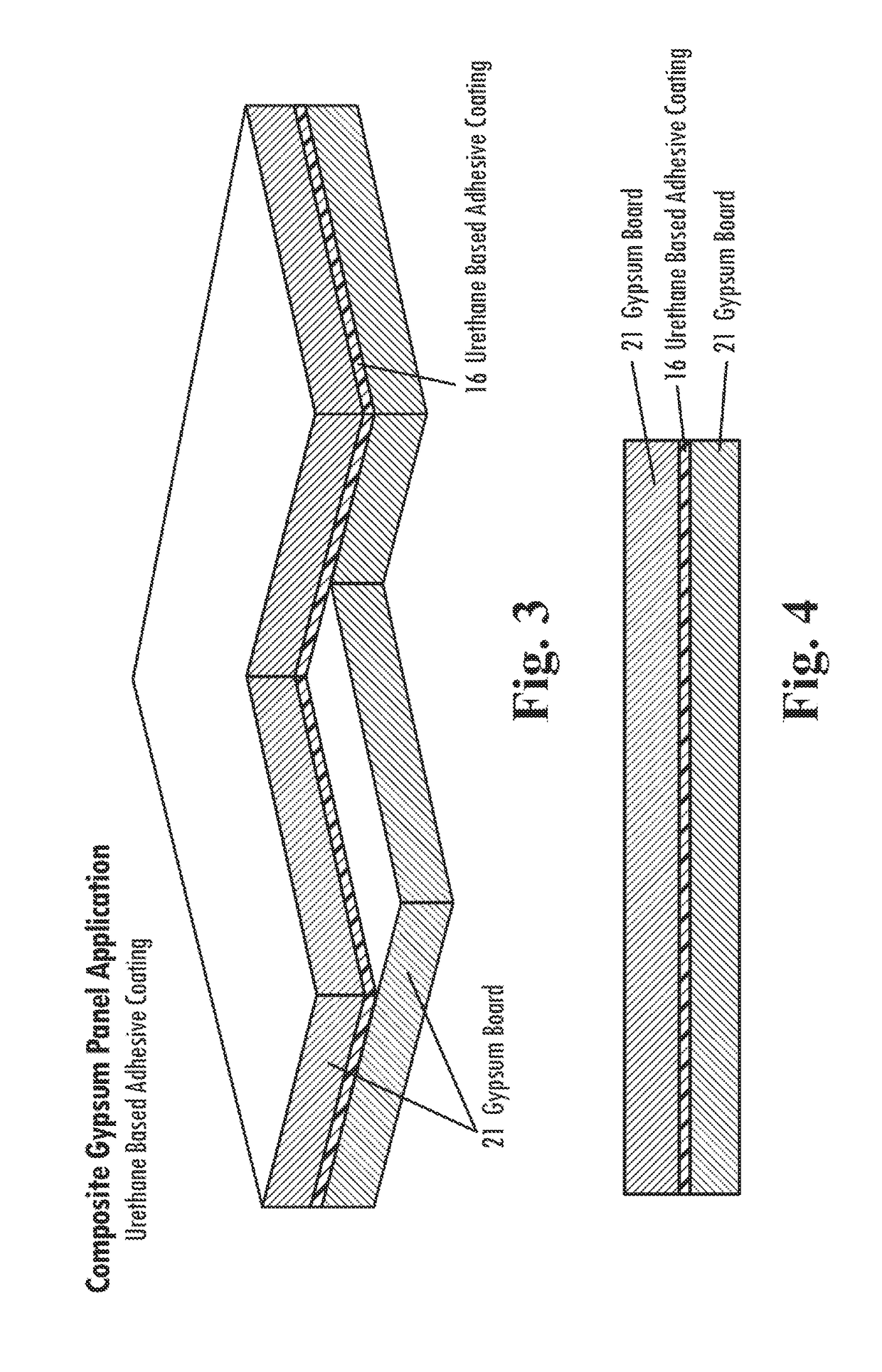Composite gypsum panel derived from urethane based adhesives
a technology of urethane and adhesives, applied in the field of drywall panels, can solve the problems of insufficient weight difference, difficult for installers to handle for extended periods of time, and the weight of the drywall panel itself, and achieve the effects of increasing nail and screw retention, lightening and/or strengthening
- Summary
- Abstract
- Description
- Claims
- Application Information
AI Technical Summary
Benefits of technology
Problems solved by technology
Method used
Image
Examples
Embodiment Construction
[0037]In various aspects, the present disclosure provides composite gypsum panels that overcome the aforementioned deficiencies in conventional drywall panels. The composite gypsum panels can include one or more gypsum substrates having a layer of urethane adhesive coating applied thereto. Any reference to gypsum substrates is inclusive of state-of-the-art readily available gypsum panels or other substrates that contain a gypsum element. The composite gypsum panels can have improved waterproofing, enhanced mold inhibition characteristics, enhanced structural integrity, enhanced thermal resistivity, and / or improved screw retention as compared to conventional drywall panels.
[0038]Before the present disclosure is described in greater detail, it is to be understood that this disclosure is not limited to particular embodiments described, and as such may, of course, vary. It is also to be understood that the terminology used herein is for the purpose of describing particular embodiments o...
PUM
| Property | Measurement | Unit |
|---|---|---|
| Temperature | aaaaa | aaaaa |
| Temperature | aaaaa | aaaaa |
| Mass | aaaaa | aaaaa |
Abstract
Description
Claims
Application Information
 Login to View More
Login to View More - R&D
- Intellectual Property
- Life Sciences
- Materials
- Tech Scout
- Unparalleled Data Quality
- Higher Quality Content
- 60% Fewer Hallucinations
Browse by: Latest US Patents, China's latest patents, Technical Efficacy Thesaurus, Application Domain, Technology Topic, Popular Technical Reports.
© 2025 PatSnap. All rights reserved.Legal|Privacy policy|Modern Slavery Act Transparency Statement|Sitemap|About US| Contact US: help@patsnap.com



